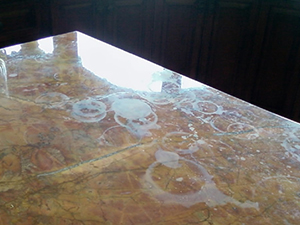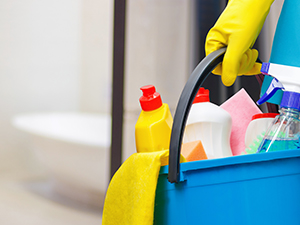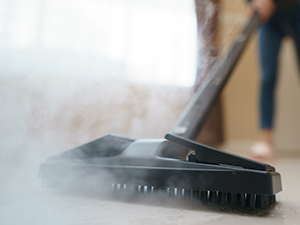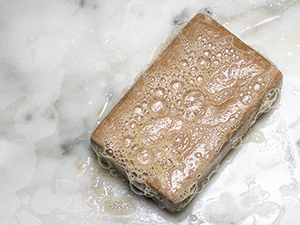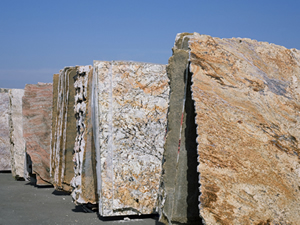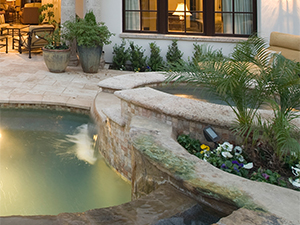Let’s Talk About Natural Stone Finishes
Natural stone comes finished in many ways. It doesn’t start that way from the quarry and it doesn’t always have to stay the way it is after it is installed.
The appearance of all natural stone is rough when it is first quarried. The surface is then altered to any number of finishes. (The name of the finish often explains how the finish is produced.) When selecting stone, understanding your options will help you to choose the best finish for the look you are going for and for your intended use.
Fabricators and stone suppliers almost always purchase stone that is already finished, so when you purchase new stone for an installation, the finish you see is the finish you get. Most of the time.
Professional stone refinishing can often alter the finish of stone using various methods, even after it is installed.
With this in mind, the following glossary of finishes will help you understand natural stone finishes, which ones are best for various purposes, and what options you have to change certain finishes.
Your Finish Options
Following is an overview of the most popular finishes, how they are achieved, and where they are most appropriate.
Polished
Natural stone with a polished finish has a glossy, mirror-like quality that showcases the colors, veining, and other unique characteristics of natural stone. If your highest concern is that the stone has an elegant appearance, a polished finish is a good choice. A polish can be achieved by using a specialized abrasive technique. Diamond-infused pads mounted on a machine rub against the stone, similar to sandpaper on wood. Industry professionals describe this process as honing and polishing. Progressively finer grit pads are used until a highly reflective polish is achieved. Polished finishes may not be slip resistant and are most appropriate where a slip and fall hazard is not a concern.
Honed, Satin, or Matte
Natural stone with a honed finish is softer and velvetier in appearance than a polished finish. The words honed, satin, matte and other descriptive terms are used interchangeably to describe a finish that is not as reflective as a highly polished finish. A honed finish can be created using the same specialized abrasive technique as that of polished stone, except that the level of desired polish is achieved sooner, with less polishing. Honed finishes are often requested where slip resistance is desired, however, a honed finish is not a guarantee that the surface will be slip resistant. Some stones are slippery even when honed.
Brushed / Antiqued
If a textured look but a smooth touch is desired, a brushed finish, also known as an antiqued finish, may be a perfect option. This type of finish is achieved using wire wheels and brushes that create thousands of microscopic scratches. The end result is a natural stone finish that looks like it has beautifully and uniformly aged over centuries of time and use. A brushed finish is an excellent choice in a setting where slip resistance and ease of maintenance is desired. Most brushed finishes will be a little more difficult to clean than honed or polished finishes.
Textured / Hammered / Tooled
Unlike smooth honed and polished finishes, textured finishes, also known as hammered or tooled finishes, have varying degrees of roughness, depending on the methods used to fashion the texture. For example, a flame heats the surface of granite to create a flamed finish. With a sandblasted finish, abrasive media is sprayed under high pressure across the surface of the stone. A tool that looks like a meat tenderizing hammer is pounded on stone to create the pockets and ridges of a bush hammered finish. With a cleft finish, the stone is simply split, and the naturally uneven break is the finish. Textured finishes hide imperfections and camouflage minor surface damage like scratches and etching, so they are ideal for areas with excessive traffic. Textured finishes are not ideal for countertops or surfaces that need to be cleaned often, because the uneven surface will snag sponges and cleaning cloths. These finished are most appropriate for exterior stone installations such as sidewalks and pool decks.
Custom
A combination of finishes may be used on a single stone surface to achieve a custom finish. For example, a logo or pattern can be sandblasted onto polished stone by protecting certain polished areas and sandblasting other areas. A similar process might involve applying acid to stone that contains calcium carbonate, causing chemical reactions that will roughen the surface of the stone. A custom finish is a great option for creating a focal point or showcasing a natural stone feature.
Impregnators, Enhancers, and Topical Coatings
There are a variety of sealers, coatings, and enhancers available that can also alter the look of stone. Be sure to consult with your PRO as using them may not always be useful or beneficial, and in some cases will result in problems.
Impregnating Sealers
Contrary to popular belief, impregnating sealers do not give stone a shine or change the texture or appearance of stone in any way, except if an impregnating sealer also happens to be an enhancer. Impregnating sealers are designed solely to fill the pores in stone to inhibit spills from staining.
Enhancers
The colors inherent in some natural stones can be heightened and intensified with enhancers. If you desire stone with a wet look (think how the color of jeans darkens when wet), enhancers will achieve this while also offering different levels of shine. Most enhancers do not inhibit staining unless the enhancer is also an impregnating sealer. Enhancers are often considered permanent, because once they are applied, they are extremely difficult to remove, but enhancers do tend to fade or are slowly removed over time with cleaning.
Topical Coatings
Unlike impregnating sealers that penetrate beneath the surface of the stone and don’t affect the look of the stone at all, sealers that stay on the surface of stone are referred to as topical coatings. Although these coatings protect stone against stains, etching, scratches, and other surface damage, they can be problematic. In general, coatings themselves can be damaged, turn yellow, and attract dirt and contaminants. Many topical sealers on floors look great at first, but once the appearance of the coating diminishes, it must be completely stripped and reapplied. Another consideration is that stone on floors needs to breathe. Coatings can trap moisture, resulting in damage to the stone itself, such as cracking, flaking, and spalling. In some situations a topical coating might be suitable, but you will want to consult with your stone restoration PRO to be sure.
Stone Restoration Technicians Can Change Finishes
When all is said and done, if you are not happy with the finish of existing stone floors, countertops and other surfaces, let’s discuss it. We can evaluate your stone and may be able to alter the appearance more to your liking. We routinely refinish shiny, polished stone surfaces to a honed (matte or satin) finish and vice versa, apply decorative textures, enhance colors, and apply specialty treatments.

